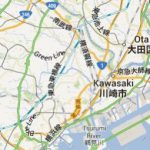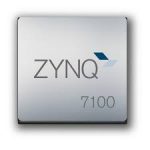You are currently viewing SemiWiki as a guest which gives you limited access to the site. To view blog comments and experience other SemiWiki features you must be a registered member. Registration is fast, simple, and absolutely free so please,
join our community today!
In a typical analog IC design team, multiple engineers and layout professionals work on cells and libraries. At various points during the design process they will commit changes to their designs into the Design Management (DM) system that manages their files – be it Subversion, Perforce or some other commercial tool.
Using the… Read More
If you have attended DAC in Austin (June 2-5), you probably have missed the first TSMC Technology Symposium. It was held on June 6 in Shanghai. Considering my own experience of a 29 hours trip to come back home (in France), I doubt that it was any possible to leave Austin on June 5 to attend TSMC Technology Symposium in Shanghai on June… Read More
GSA’s next event is the annual Entrepreneurship Conference to be held at the Computer History Museum on July 18th. The event runs from 3pm to 8pm. Attendance is free but you must register here.
The event consists of 5 panel sessions followed by a reception. The full roster of who will be on each panel is not completely finalized… Read More
While eyes remain fixated on the architectural battle between Intel and ARM, a second front is soon about to open up that will determine mobile supremacy for the rest of the decade. Whereas yesterday’s story on the collapse of Wintel and the anointing of Google and Samsung are repeated endlessly, now tables are being set for a significant… Read More
GPU vs. FPGAby Luke Miller on 06-09-2013 at 9:00 pmCategories: FPGA, Xilinx
I just don’t understand it? My kids love surprises but I have yet to find management that does, go figure but boy during a review they can really spring them on ya! What surprises me is the absurdness of my title, GPU vs. FPGA. FPGAs are not GPUs and likewise but none the less there is the push to make a fit where nature does not allow. I liken… Read More
Monday morning at DAC I met with Real Intent to get an update on their SoC sign-off tools:
- Dr. Prakash Narain, President and CEO
- Graham Bell, Sr. Dir. Mktg.
Years ago Prakash was at IBM the only two years that they attended DAC, in an attempt to offer their internal EDA tools to the EDA marketplace. Graham worked at Nassda marketing the… Read More
I’m utterly amazed at how IC-based products are improving our quality of life by implantable devices. The modern day pacemaker has given people added years of life by electrically stimulating the heart. A privately-held company called NeuroPace was founded in Mountain View, California to treat epilepsy by using responsive… Read More
This was my 30[SUP]th[/SUP] DAC and the second most memorable. The most memorable was my second DAC (1985) in Las Vegas with my new bride. We had a romantic evening ending with ice cream sundaes at midnight that we still talk about. This year SemiWiki had Dr. Paul McLellan, Dr. Eric Esteve, Daniel Payne, Don Dingee, Randy Smith, and… Read More
Metastability is an inescapable phenomenon in digital electronic systems. This phenomenon has been known to cause fatal system errors for half a century. Over the years, designers have used convenient rules of thumb for designing synchronizers to mitigate it. However, as digital circuits have become more complex, smaller … Read More
On Sunday I attended an IP workshop which was presented by TSMC, Atrenta, Sonics and IPextreme. It turns out that the leitmotiv of the afternoon was SpyGlass.
Dan Kochpatcharin of TSMC was first up and gave a little bit of history of the company. They built up their capacity over the years, as I’ve written about before, and last… Read More
















Quantum Advantage is About the Algorithm, not the Computer